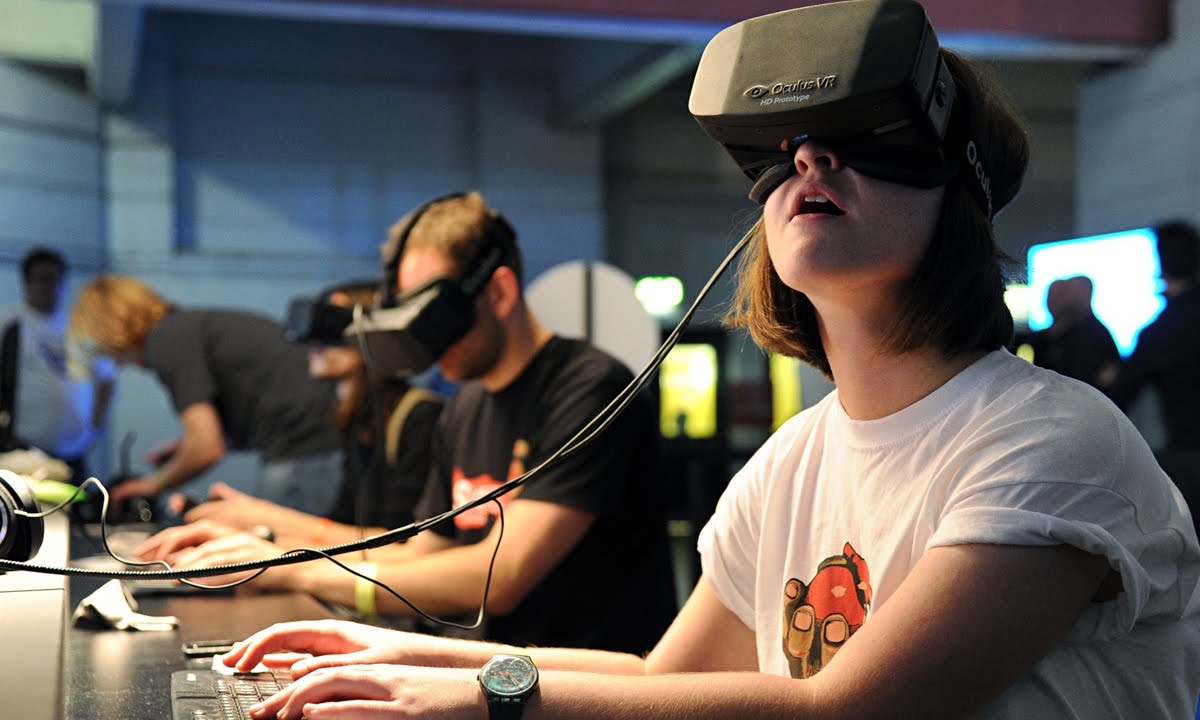.jpg) Virtual reality (VR) is a computer technology that uses headsets, sometimes in combination with physical spaces or multi-projected environments, to generate realistic images, sounds and other sensations that simulates a user's physical presence in a virtual or imaginary environment.
Virtual reality (VR) is a computer technology that uses headsets, sometimes in combination with physical spaces or multi-projected environments, to generate realistic images, sounds and other sensations that simulates a user's physical presence in a virtual or imaginary environment.
A person using virtual reality equipment is able to "look around" the artificial world, and with high quality VR move about in it and interact with virtual features or items. VR headsets are head-mounted goggles with a screen in front of the eyes. Programs may include audio and sounds through speakers or headphones.
Cinema and entertainment
.jpg)
Films produced for VR permit the audience to view a 360 degree environment in every scene. Production companies, such as Fox Searchlight Pictures and Skybound, utilize VR cameras to produce films and series that are interactive in VR.Pornographic studios such as Naughty America, BaDoinkVR and Kink have applied VR into their products since late 2015 or early 2016. The clips and videos are shot from an angle that resembles POV-style porn.
Healthcare and clinical therapies
According to a recent report from Goldman Sachs, healthcare could be one of the next markets that VR/AR disrupts.Already, VR devices are being used in clinical therapy, and the results are significant.
Anxiety disorder treatment
Virtual Reality Exposure Therapy (VRET) is a form of exposure therapy for treating anxiety disorders such as post traumatic stress disorder (PTSD) and phobias. Studies have indicated that when VRET is combined with other forms of behavioral therapy, patients experience a reduction of symptoms.![download.jpg] In some cases, patients no longer meet the DSM-V criteria for PTSD after a series of treatments with VRET.
Education and training
U.S. Navy personnel using a VR parachute training simulator.
VR is used to provide learners with a virtual environment where they can develop their skills without the real-world consequences of failing.